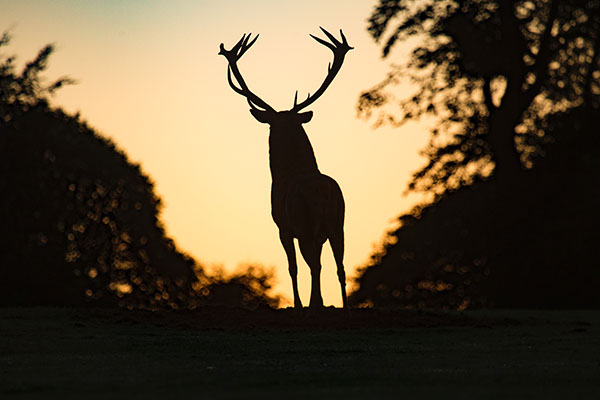Nature fans and hunters frequently desire to recognize how and the place deer sleep. It is generally a frequent query that arises among them. You may be amazed to understand that regardless of famous belief, deer don’t sleep at night time as tons as they sleep all through the day. Because they are nocturnal creatures, they sleep mostly in the course of the day.
Where Do Deer Sleep
Deer sleep in thick, thick leafage in the open fields and on low-fall trees in the timber. They don’t have a fixed place they sleep – any comfortable and safe place from bloodsuckers would do.
There are three main effects a deer looks for when deciding where to make a bed down or sleep:
Coverage the coverlet ground has to give them with disguise against bloodsuckers.
Food & water the coverlet area has to bear an abundant force of water and food. It must also warrant the presence of bloodsuckers.
Entrance & Exit A deer will only sleep in a place it can fluently escape from when spotted by bloodsuckers.
Utmost deer sleep on their sides with their heads up, while baby deer or fawns sleep with their tips put away under their hind legs. Some of them sleep while standing up, although that’s rare. You can’t tell if a deer is sleeping because they close and open their eyes while sleeping to confuse bloodsuckers.
Where Do Deer Sleep Base On Time Of Year
In the summer, when foliage is thick everywhere, deer have many bedding options and like to be as close to food and water as possible. Remember that browsing options are highest during the summer, so their food source may not always be a big agricultural field.
As the leaves start dropping in the fall, deer bedding will shift to the areas with more cover while still being a reasonable distance away from the primary food source. This is where thicker areas play more of a role. When the leaves have all dropped, bedding is the most concentrated in the last areas of security cover. Conifer trees that create a thermal cover, mountain laurel, and beech thickets close to food come to mind during the winter.
Common Characteristics Of A Deer’s Sleeping Area
Protection From Humans
Deer will avoid areas with high mortal business, frequently looking for an area that’s insulated from direct mortal business and an area thick enough where it’s harder for any humans in the area to see them. Deer will also generally leave an escape route in case the mortal exertion is too close for comfort.
Protection From Animal Predators
A coverlet area will generally help deer avoid bloodsuckers as much as possible. The deer will look for places that offer good cover similar to thick backwoods, tall meadows, and low-hanging branches. They will also look at terrain features that give natural walls similar to escarpments, notch walls, steep pitches, and large jewels.
Deer will also bed and use their senses in combination with the coverlet area. They frequently use lines of sight and wind direction which profit the deer’s inconceivable sense of smell.
Protection From Wind
Cold and downtime rainfall can impact deer substantially during rest ages. Deer will frequently use where they bed to help shield themselves from windy rainfall. analogous terrain that protects deer from bloodsuckers can help with wind control.
Escarpments, steep pitches, and evergreen trees can all be favorite locales of deer when looking to shelter from a blow.

Air Temperature
Similar to wind protection, when the air temperature reaches extreme heat or extreme cold waves you’ll frequently find deer coverlets in different areas. During really hot ages you’ll find deer seeking shade and resting during the daylight hours and moving around more at night when the temperatures are more moderate.
In extreme cold waves, you’ll frequently see the deer out further during daylight hours and coverlet down at night in groups generally using terrain, encounter, and trees to produce a wind break.
When Do Deer Sleep
Mostly, deer sleep all through daylight hours whilst the solar is out. They don’t sleep for long, and they cross their bedding floor a lot whilst napping.
Deer hardly ever sleep at night time due to the fact this is when their predators are most active. They can, however, sleep at night time if they are hiding from predators or making an attempt to conserve energy.
How Long Do Deer Sleep
Each deer’s sleep cycle consists of dozing for 30 seconds to 3 minutes. Also, they snap awake, impend around for bloodsuckers, stretch their branches, and go back to sleep. occasionally, they defecate or urinate after they wake up.
They repeat this sleep cycle continuously for about 30 minutes. However, it would amount to an aggregate of about 12 hours, If you count the multitudinous sleep cycles deer have in a day.
Do Deer Sleep Alone Or In Groups
Deer may sleep alone on occasion, but they love sleeping in groups. It makes them feel safer from bloodsuckers. A group of deer can spot a bloodsucker more briskly than a single deer will. So the larger the number of deer gathered in a place, the easier it’s to spot a bloodsucker before it’s too late.
The cognizance of deer is always alert through their sleep cycle. They’re incredibly apprehensive of every change in their terrain, indeed while sleeping.

